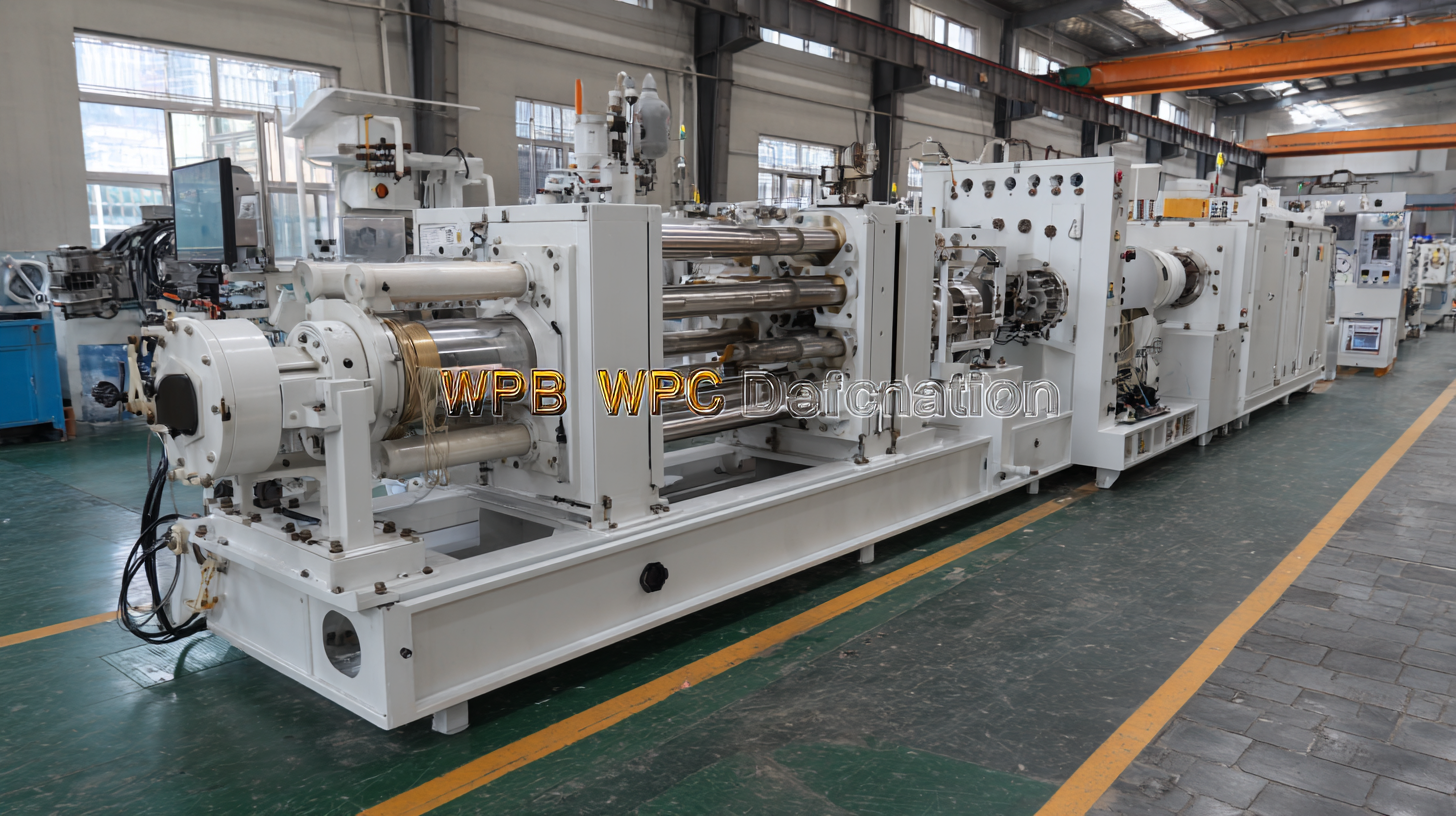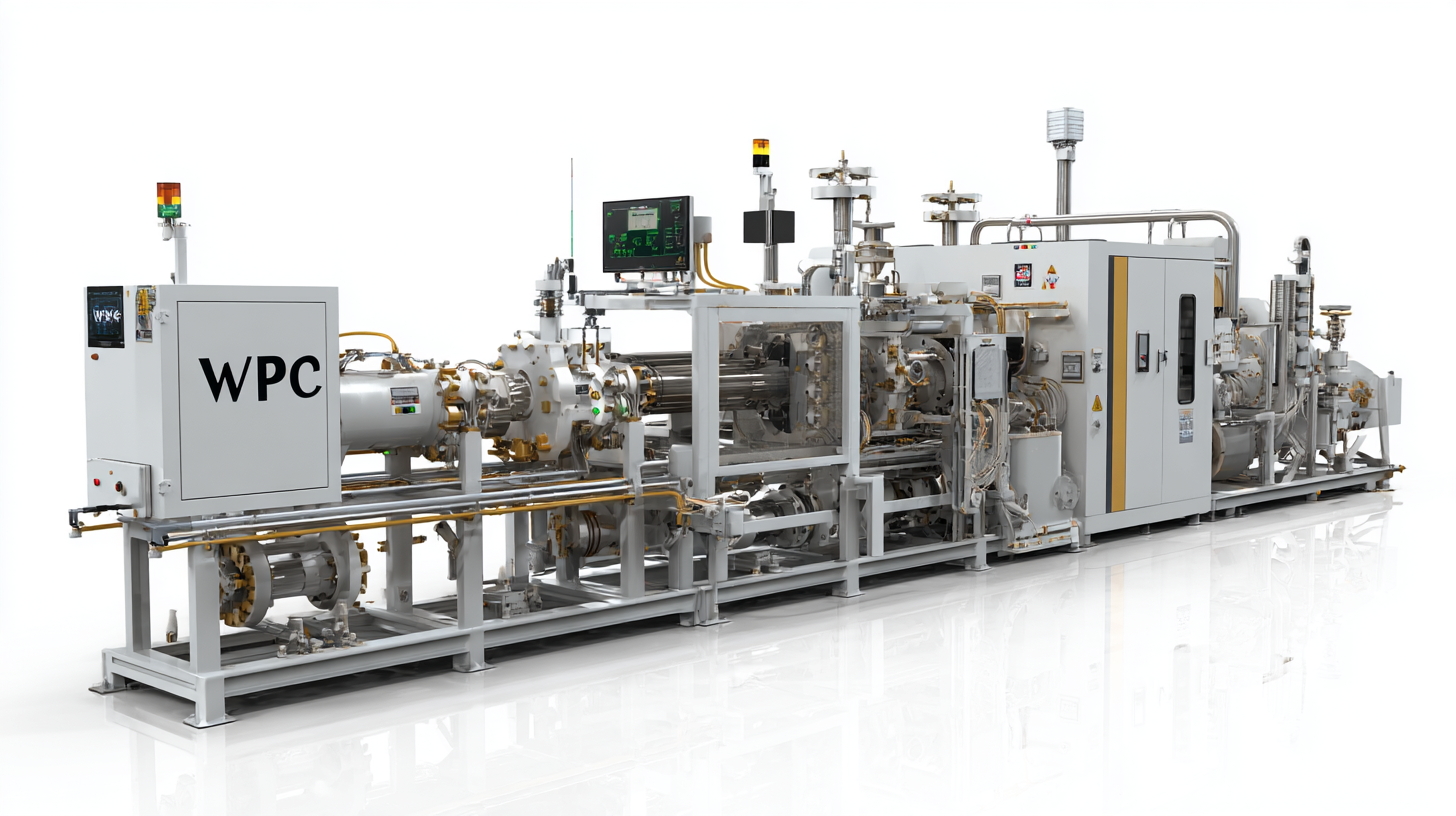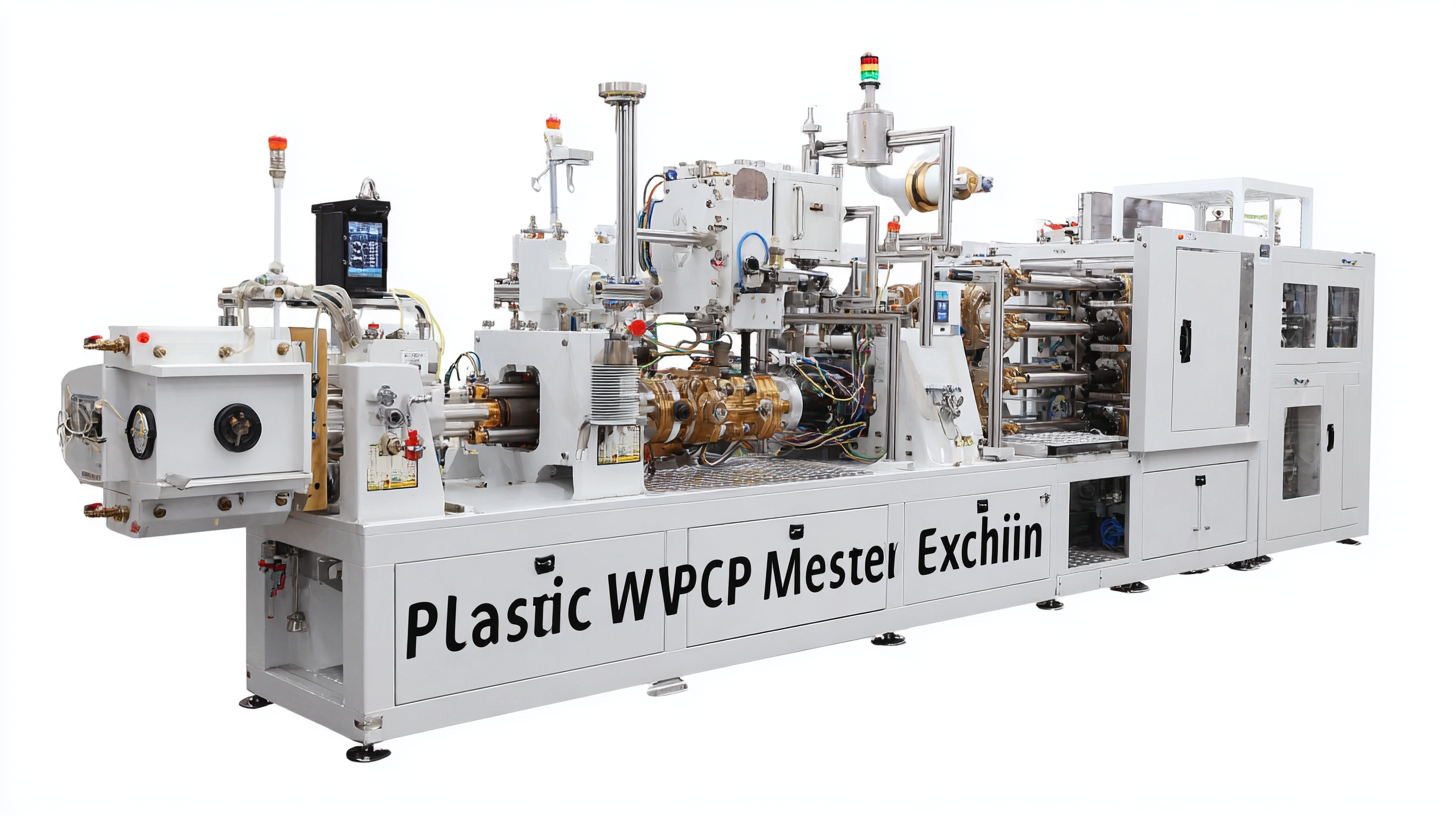
In the ever-evolving landscape of manufacturing, the demand for reliable and efficient equipment such as the Plastic WPC Extrusion Machine has surged significantly. According to a recent report by MarketsandMarkets, the wood-plastic composites market is projected to reach USD 9.1 billion by 2025, reflecting a compound annual growth rate (CAGR) of 11.2% from 2020. As global buyers look for sustainable and high-performance alternatives, understanding the key players and technologies behind plastic WPC extrusion is crucial.

This blog aims to explore the top alternatives to the best Plastic WPC Extrusion Machine available on the market, delving into industry production standards and practical how-to guidelines to assist manufacturers in navigating their choices effectively. By analyzing various options and their specifications, we will provide insights that align with industry best practices.
When considering the options for plastic WPC extrusion machines, it's vital to acknowledge the limitations of traditional models. These machines often struggle with precise temperature control and material consistency, which can lead to significant variations in the final product. Additionally, they may not be designed to handle the increasing demand for eco-friendly materials, making it difficult for manufacturers to adapt to the latest market trends.
Tips for Evaluating Alternatives:
Look for extrusion machines that offer advanced temperature regulation features and better material handling capabilities. This ensures you achieve a higher-quality output while maintaining efficiency in production.
Moreover, traditional machines can be costly to maintain and operate. Assess the total cost of ownership, including energy consumption and spare parts availability when exploring alternatives. Prioritizing options that feature energy-efficient designs can lead to substantial savings.
Tips for Cost-Effectiveness:
Consider investing in a machine with a modular design that allows for easy upgrades or adjustments, thus extending its utility across various types of materials and production needs.
As the demand for Wood-Plastic Composites (WPC) continues to surge, optimizing production efficiency has become a critical focus for manufacturers. Innovative alternatives to traditional plastic WPC extrusion machines are emerging, allowing global buyers to enhance their production capabilities. Reports indicate that the WPC market is projected to reach USD 5.1 billion by 2027, with a CAGR of 10.4% from 2020 to 2027. This growth is driven by an increasing demand for sustainable materials in construction and other industries.
One noteworthy alternative is the integration of advanced automation technology in extrusion processes. Automated systems can significantly reduce labor costs and increase throughput. According to a study by MarketsandMarkets, the adoption of automation in manufacturing could lead to a 20-30% increase in efficiency while also minimizing waste. Moreover, introducing smart extrusion machines that utilize real-time data analytics can help manufacturers optimize their production lines, ensuring consistent quality and reducing downtime.
Additionally, biocomposite extrusion technology presents another promising avenue for enhancement. By incorporating natural fibers into the WPC mix, manufacturers can produce lighter and stronger materials. Data from the American Composites Manufacturers Association highlights that using natural fibers can reduce overall production costs by up to 15%. This not only meets the market's sustainability demands but also positions firms to take full advantage of the eco-conscious consumer base. Such innovations highlight the importance of exploring alternatives that can boost production efficiency in the increasingly competitive WPC market.

The extrusion process has long relied on traditional plastic materials, but the industry is witnessing a significant shift towards eco-friendly options. According to a report by MarketsandMarkets, the global eco-friendly materials market is projected to reach USD 500 billion by 2025, growing at a CAGR of 12.5%. This change is driven by increased awareness of environmental sustainability and the need for manufacturers to adapt to stricter regulations regarding plastic usage, especially in the packaging and construction sectors.
When comparing plastic to eco-friendly materials in extrusion, one must consider their respective properties and performance. While plastics offer versatility and cost-effectiveness, eco-friendly alternatives such as bioplastics and recycled materials often provide enhanced sustainability benefits. For instance, the adoption of bioplastics can lead to a reduction of carbon emissions by up to 80% compared to conventional plastics, as noted in a study by the European Bioplastics Association. This significant reduction makes eco-friendly materials increasingly appealing to global buyers seeking to balance performance with environmental responsibility.
| Material Type | Applications | Advantages | Disadvantages | Cost (per kg) |
|---|---|---|---|---|
| Plastic | Packaging, Automotive Parts, Consumer Goods | Durability, Versatility, Low-Cost | Environmental Impact, Non-biodegradable | $1.20 |
| Recycled Plastic | Construction, Landscaping, Furniture | Reduces Waste, Cost-effective | Variable Quality, Limited Applications | $1.00 |
| Wood Plastic Composite (WPC) | Decking, Fencing, Flooring | Aesthetics, Resistant to Splintering | Higher Cost, Requires Special Equipment | $2.50 |
| Biodegradable Plastics | Single-use Packaging, Disposable Cutlery | Eco-friendly, Reduced Landfill Pollution | Higher Production Costs, Shorter Shelf Life | $2.00 |
| Natural Fiber Composites | Automotive Interiors, Furniture | Sustainable, Lightweight | Higher Cost, Moisture Sensitivity | $3.00 |
When selecting a high-performance WPC extrusion machine, several key features should be prioritized to ensure optimal production efficiency and quality output. First and foremost, the machine's capacity to handle diverse materials is crucial; machines designed for versatility can process a range of wood-plastic composites, which is essential as the demand for eco-friendly building materials continues to rise. Reports indicate that the global WPC market is expected to grow significantly, influenced by sustainability trends and innovations in material technology.
Another important feature is the machine's energy efficiency. With rising energy costs, manufacturers are increasingly seeking equipment that minimizes power consumption while maximizing output. Advanced extrusion machines equipped with smart technology can effectively monitor energy usage and adjust processes in real-time, which not only improves performance but also reduces operational costs. Additionally, the ability to provide consistent product quality through precise temperature and pressure control is paramount, as fluctuations can lead to defects, impacting overall productivity and profitability.
Lastly, ease of maintenance should not be overlooked. A machine that allows for quick cleaning and part replacement can significantly reduce downtime, a critical factor in maintaining production schedules. The integration of automation in maintenance tasks can further enhance machine reliability and operational efficiency. As the industry evolves, these attributes will define the market leaders in WPC extrusion technology, catering to the increasing expectations of global buyers.
The evolution of extrusion technology has opened up numerous avenues for manufacturers seeking alternatives to traditional plastic WPC extrusion machines. A notable case study involves a company that transitioned from conventional extrusion methods to a more innovative twin-screw extruder system. This shift not only improved the quality of their composite products but also significantly enhanced production efficiency. The integration of advanced screw design and temperature control allowed for better mixing of materials, which resulted in superior end products that met the stringent demands of the market.
Another compelling example comes from an environmentally conscious manufacturer that adopted a hydrostatic extrusion method. By leveraging this alternative technology, they were able to minimize energy consumption while producing high-strength profiles from recycled materials. The successful implementation of this technique not only bolstered their sustainability credentials but also attracted a new clientele that values eco-friendly practices. These case studies illustrate that exploring alternative extrusion technologies can yield remarkable benefits, positioning companies competitively in an increasingly demanding global market.

